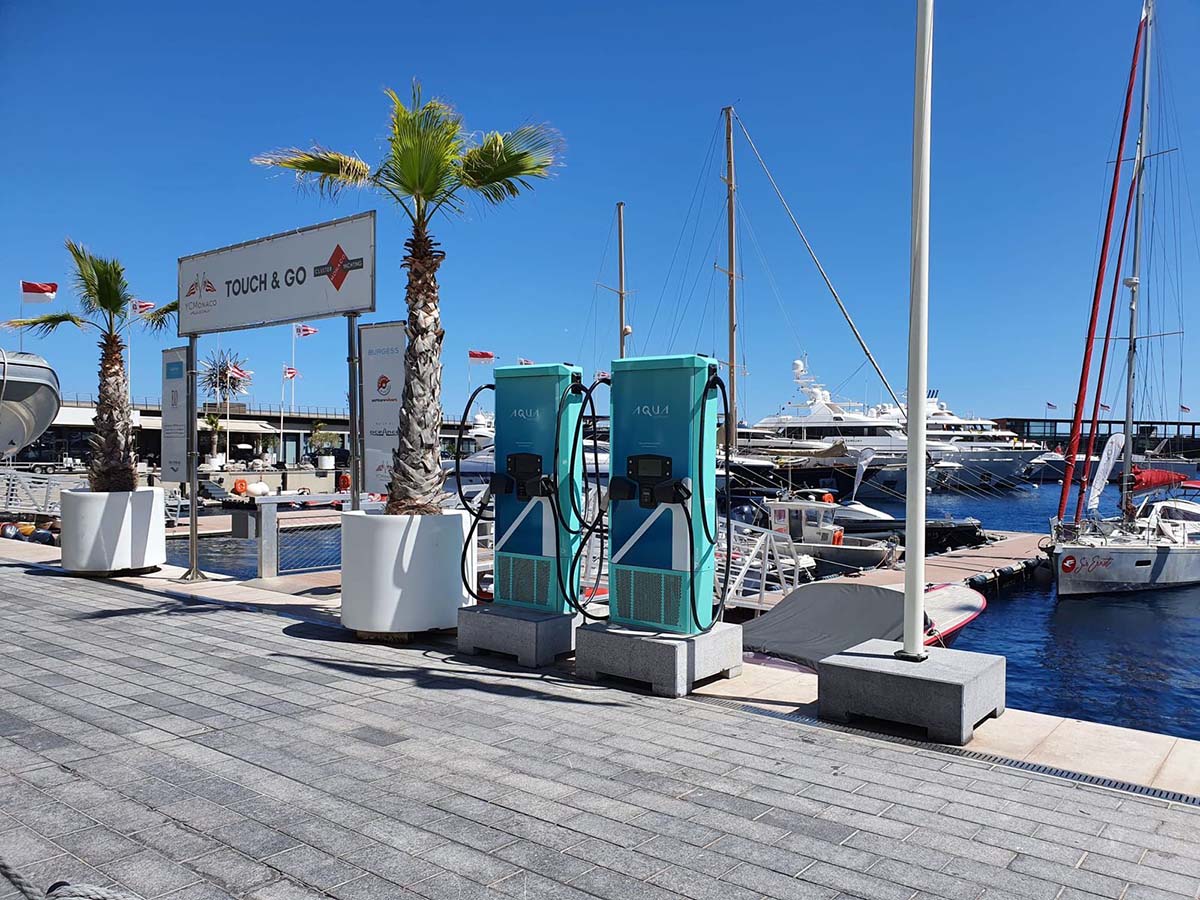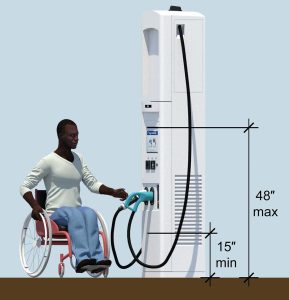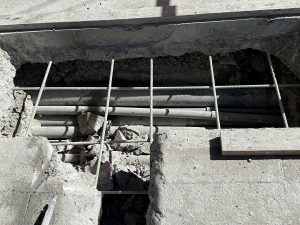
Electric Boats – To Be or Not to Be?
Published on April 1, 2025There are many questions facing the industry regarding electric propulsion. Some say that electric boats are on a bullet train trajectory, while others say it will be derailed. There is another group advocating alternative sources of energy, including biofuels, hydrogen, diesel and other options. It is impossible to pick up trade magazines, journals or similar literature without information about going electric. The articles are rife with supporters, opponents and questioners. There is an overwhelming amount of information available.
So, what does a marina operator do?
Some Simple Advice
My advice is to sit down and take a deep breath before jumping on board with going electric. Take time to weigh the pros and cons and then come up with an approach that makes sense for your specific facility and market.
There is no question that the popularity of electric boats for recreation, particularly for boats under 45 feet, is on the rise. More and more companies are announcing that they are making models with electric motors vs. combustion engines, mimicking the automobile industry, which is pushing, or being pushed, hard in this direction worldwide. For the marina industry, though, there are multiple things to give real thought to when thinking about the shift to charging electric boats.
Current Perspective
In the current recreational boating market, most of the boats have combustion engines. Even if 100% of the boat sales in the next five years were to be all electric, which will not be the case, they would only comprise a small fraction of the existing inventory. The overall turnover rate for boat replacement is also much lower than in the automobile world. This means that for the foreseeable future, in most places, boats with combustion engines will continue to dominate, with a slowly growing number of hybrid or all-electric craft working their way into the fleet.

Issues with Batteries
There are several issues with batteries. For boaters used to virtually unlimited time or distance constraints, the thought of battery life limitations can be frustrating. While battery manufacturers are working to expand the possible range of travel between charges, boaters, like drivers, are justifiably concerned about where and how often they will need to charge. Are there convenient charging stations nearby? What about waiting time? A fuel tank can be refilled in minutes, while charging a battery can take hours. At some point in the future, battery range will expand, and chargers will be omnipresent. But right now, this can be a formidable barrier. Most electric car owners use their vehicles for short commutes, local shopping, entertainment and short trips. For longer trips, most still rely on gas or hybrids. Boaters don’t usually have a second boat the way electric car owners often have a second car available for long trips. Unlike an electric lawn mower, power tool or leaf blower, it isn’t possible to carry a spare battery and slip it in if needed.
Other battery concerns include potential environmental impacts as well as the current problems associated with disposing of spent lithium-ion batteries. These can be significant considerations, although perhaps not quite as big as what comes next.
Fire Dangers
Lithium-ion batteries are a great concern to many in terms of potential safety issues, in relation to the battery being scratched or otherwise damaged or becoming loose and being bounced around in the hull of a boat. If a battery catches fire, the ability to put it out is significantly more challenging than that of a gasoline or diesel fire. The media continues to relate multiple reports of lithium batteries exploding in phones, e-bikes and other appliances. This may be that these exploding batteries are not manufactured by a reliable source.

Whatever the reason, a lithium battery fire at a marina is significantly more problematic than gasoline or other fires, not that any are desirable. Some insurance companies have announced that they are considering excluding coverage from fires caused by lithium batteries for houses, apartments and other covered/indoor areas.
Infrastructure Updates
Some manufacturers say there are units in existing power pedestals’ plugs that can be exchanged to allow for electric boat charging. However, there are industry electric code experts that say changing one connection within a current power pedestal to another is often not code compliant. If such changes are undertaken in a non-code-compliant manner, that raises a whole new spectrum and level of concern for the marina operator. The best course of action for a marina owner or operator is to go beyond the seller of the units and seek out the opinion of someone who knows the electrical codes
There are also real concerns relative to the electrical infrastructure supply to handle a changeover. Electric charging requirements vary greatly depending upon whether one is looking for a quick charge, a medium-term charge or an overnight charge.
Beware of the Unexpected
It is estimated there are between 10,000 and 12,000 marinas in the United States. It is also believed that more than 75% of those marinas have not had any major repowering to their facilities in numerous years, while continuing to increase electrical load needs for both the upland and in-water activities. It is also believed that more than 80% of those facilities are currently underpowered for their current total site operational needs, even if the facilities were last powered or repowered following the applicable electrical and other codes required at that time. Like everything else over time, there have been many changes and updates with the electrical and building codes,

and the facilities may not be in compliance with the current requirements.
That may not be that much of an issue if a marina is not making any changes, but if the facility starts making changes for electric boat charging, then there are likely code-compliance issues that must be addressed, which potentially translate to significant unanticipated costs.
A recent true case is that of a small marina with fewer than 75 boats up to 60 feet in length. Owners wanted to reconfigure part of the facility, and in doing so wanted to be pro-active to accommodate a few electric boat charging stations with fast charging and allow for overnight charging to meet their customers’ anticipated future usage needs. What started out as a relatively simple desire and budget of roughly $30,000 quickly turned into ever-growing costs of well over three-quarters of a million dollars. The issues that were encountered included that the overall electrical usage at the facility for the upland and in-water uses was already over capacity. The existing system and feed from the public utility could not handle any more electrical needs, which the electric charging would require. Upgrading to meet current electrical and building codes, including flood zone requirements, were other issues, along with working out required electrical wiring and unit issues to meet the desired future needs.
The Future
Electric boat charging stations, like electric boats, are still in their early stages. Eventually, many of these problems will be worked out in more meaningful, user-friendly and, hopefully, financially cost-beneficial, implementable approaches.
To be clear, I am not against electric boats or charging, but I do believe that there are lots of issues that are just rising to the surface that most are not aware of or have not been given enough thought.
The utility infrastructure in many places also is not yet geared up to handle a major switchover from the combustion engine to the electric motor, and it will take years to get there. In fact, the utility companies in many areas are struggling just to keep up with current demands, particularly when the weather gets hot, which just so happens to coincide with some of the most desirable boating weather.
In the interim, I would recommend taking a hard look at what your current usages are and anticipated needs. Some facilities have taken the path to being the first in their area to have electric charging so that, as boaters change to electric boats, they would stay or come to their facility. Others have decided to wait and see, and still others are trying to come up with a plan for when technology advances to overcome some of the current obstacles.
In some cases, facilities are turning to companies that are promoting electric charging stations by having the company put them in, continue to own them and retain the revenue from their use to get a return on their investment.
However, that approach may not fit many business models or facility infrastructure perspectives, and these ventures are typically limited to areas where there is high boater concentration and boater interest to have electric boats.
For those planning a new facility, major reconfiguration or a new addition to an existing facility, it’s smart to consider electric charging needs and make provisions for implementation at perceived desired timetables. Today, it is much easier to create electric charging stations, whether for boats or cars, associated with new construction since the incremental costs beyond those required for all that new code compliant electrical work will be far more reasonable.
For marina owners and operators who plan to install electric charging, whether for boats or vehicles, make sure that the installations take place in a manner that is handicap-accessible/ADA compliant. While it is not known if there are specific accessibility rules regarding electric charging stations for boats, in the United States and many other countries the accessibility requirements for electric charging stations for cars are extensive. It can easily be inferred that these fundamental charging station requirements also apply to charging stations for boats, leaving out rules such as parking space dimensions, which are specific to cars.
It is recommended that marina owners and operators inspect current usages and anticipated needs. Utilize those findings to create a plan that takes all of these issues into consideration in preparation for a future with electric boats.
Dan Natchez, CMP, is president of DANIEL S. NATCHEZ and ASSOCIATES Inc. He can be contacted by phone at 1/914/698-5678, by WhatsApp at 1/914/381-1234, by email at dan.n@dsnainc.com or online at www.dsnainc.com.
| Categories | |
| Tags |





